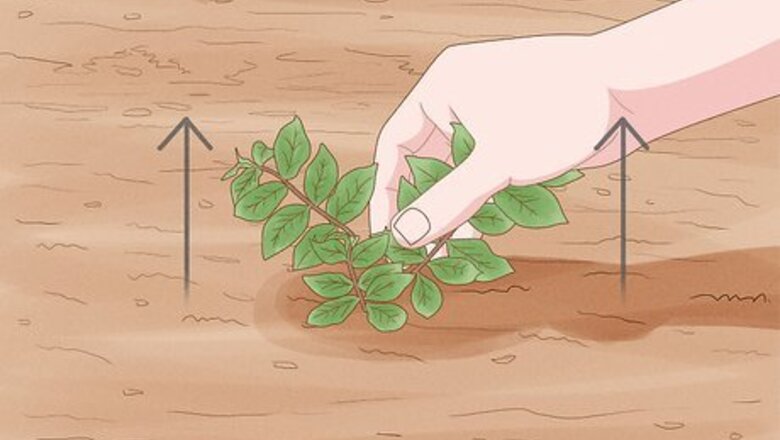
views
- Pull up honeysuckle seedlings or small plants by hand to quickly remove the plant.
- Cut larger plants down to the stem and apply an herbicide to kill the honeysuckle.
- Check the area frequently to pull up new growth before the honeysuckle can return.
Pull up honeysuckle seedlings by hand.
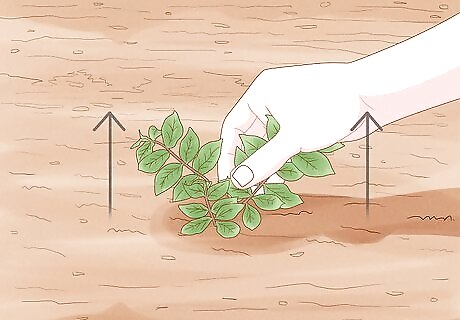
Grab honeysuckle near the roots and pull it out if the plant is small. This method also works best if the soil is somewhat loose—you might find it easier to hand-pull honeysuckle after a rain shower. Ensure that you pulled up the root system and didn't just snap off the leafy part of the plant. Hand-pulling is the most effective if you pull out the plant while it's still a seedling so it doesn't have a chance to spread.
Dig up established honeysuckle bushes.

Use a shovel to dig up stubborn roots or you want to put in a plant. If you're dealing with a larger or more established honeysuckle, dig out the roots to remove the plant. If a shovel isn't doing the job, try using custom tools like a circle hoe or stand-up weed puller to create leverage that forces the root out. Since digging up the root system disturbs a lot of the soil, plant something new in its place to prevent erosion. Dig through the soil with your hands to check that you removed every bit of the roots or else the honeysuckle could re-root. Avoid digging up honeysuckle along streambanks or you could worsen erosion. Try to pull up as much honeysuckle by hand as you can before using herbicides on it.
Cut stems of a large honeysuckle plant close to the ground.
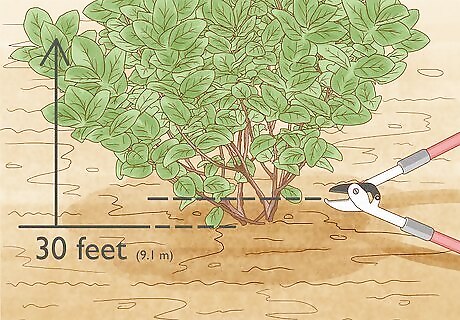
Use a hand saw or loppers to cut back big honeysuckle plants. Honeysuckle can grow up to 30 feet (9.1 m) high! To make it more manageable to remove, grab a handsaw or a pair of sharp loppers and cut through honeysuckle as close to the ground as possible. If you're removing lots of very large honeysuckle plants, use a chainsaw.
Treat the cut stems or stump with herbicide.
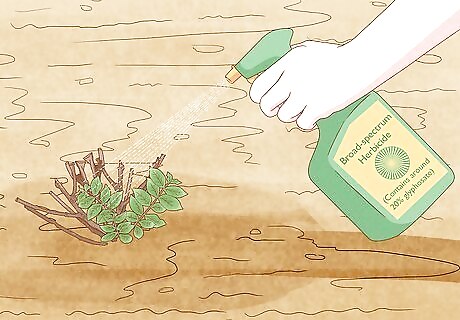
Immediately apply herbicide to stop the honeysuckle from regrowing. If you leave a stump or honeysuckle stems exposed, they will put on even more growth! It's vital that you act fast and spray herbicide onto the cut honeysuckle. Buy a broad-spectrum herbicide that contains around 20% glyphosate and use a pump sprayer to spray it onto the outer edge of the cut stump or stem. If you're removing honeysuckle from a large area, it can be hard to keep track of what you've already sprayed. To help, add blue or red food dye to the herbicide so you can easily see which stumps and stems are done. Avoid spraying herbicide on nearby plants. Read the manufacturer's instructions for safely using the product. Wear gloves to protect your hands and wash thoroughly after you're done applying the herbicide. If you don't want to use an herbicide, cover the stump with a heavy-duty garbage bag and tie it shut. Then, staple it to the ground and leave it for a few months to ensure that plant won't re-sprout.
Dispose of the uprooted honeysuckle.
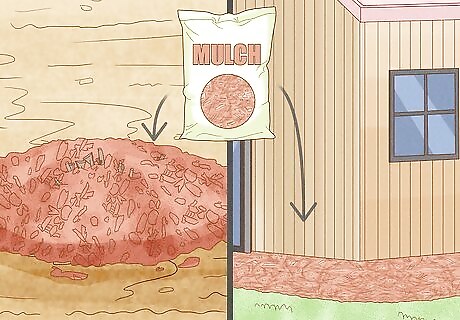
Mulch or burn the pulled honeysuckle so it can't reestablish itself. If you toss pulled-up honeysuckle onto the ground and leave it, the plant can re-root and grow. To eradicate the honeysuckle, let it dry completely with the roots pointed up in the air before you run it through a wood chipper. Then, you can spread the mulch around your property or add it to a woodland trail. If you don't have a chipper, pile up the honeysuckle and burn it. Check your local city guidelines for burning yard waste. They may only allow seasoning burnings during specified dates.
Remove seedlings that come back.
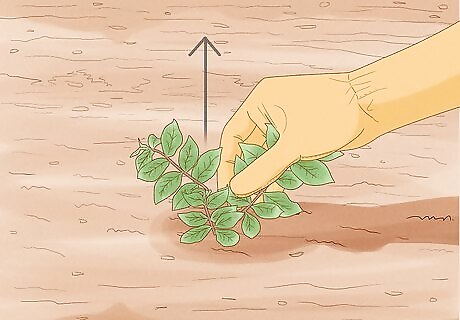
Honeysuckle is a relentless plant that can return if you don't monitor it. Since you removed the honeysuckle plant, more light is able to reach the space, which can help new honeysuckle seedlings put on growth. To prevent it from coming back in full force, check the area frequently throughout the following year and hand-pull every seedling you spot. It's easier to hand-pull the tiny plants rather than wait and treat honeysuckle that's widespread.
Spray herbicide over a wide area of re-sprouting honeysuckle.
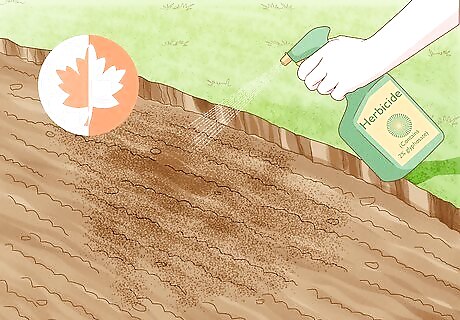
If you cleared a large area, follow up with foliar herbicide. Purchase an herbicide that contains 2% glyphosate and spray the seedlings that pop up in early spring. You could also apply the herbicide in late fall—just avoid spraying when the native plants are putting on growth. Take care not to use the product on a windy day or the herbicide may land on surrounding plants.
Put on gloves or eye protection for getting rid of honeysuckle.
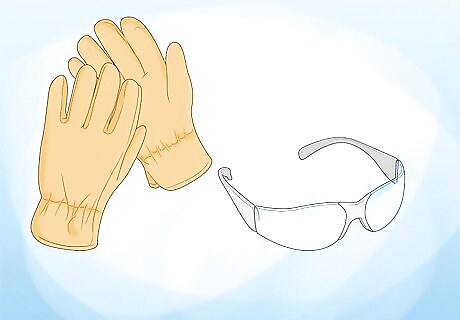
Gloves and goggles protect your eyes and hands from herbicides and scratches. It's also a good idea to wear long pants and a long-sleeved shirt if you'll be working in wooded areas so you don't brush up against sharp brambles or poison ivy. Since you'll be working with tools, wear closed-toed shoes in case you drop something sharp on your foot.
Identify and remove honeysuckle in early spring or late fall.
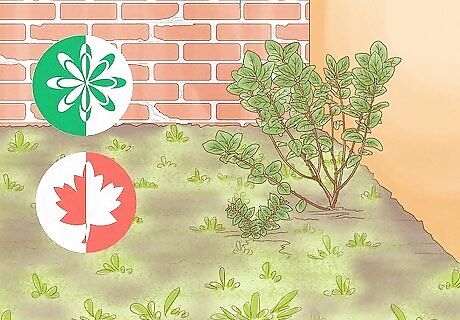
It's easiest to spot invasive honeysuckle during spring or fall. During early spring, invasive honeysuckle puts on leaves before native honeysuckle, and in late fall, invasive honeysuckle keeps its yellow-green leaves and red berries long after native honeysuckle drops its leaves. Honeysuckle grows in a variety of landscapes—you may see it growing along streambanks, wooded areas, and prairies. If you're not sure if the plant is native or invasive, snap off a small branch. If it's native honeysuckle, it has a solid white pith throughout. Invasive honeysuckle is hollow.












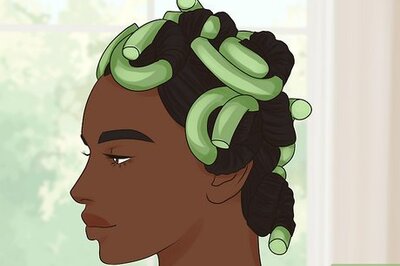


Comments
0 comment